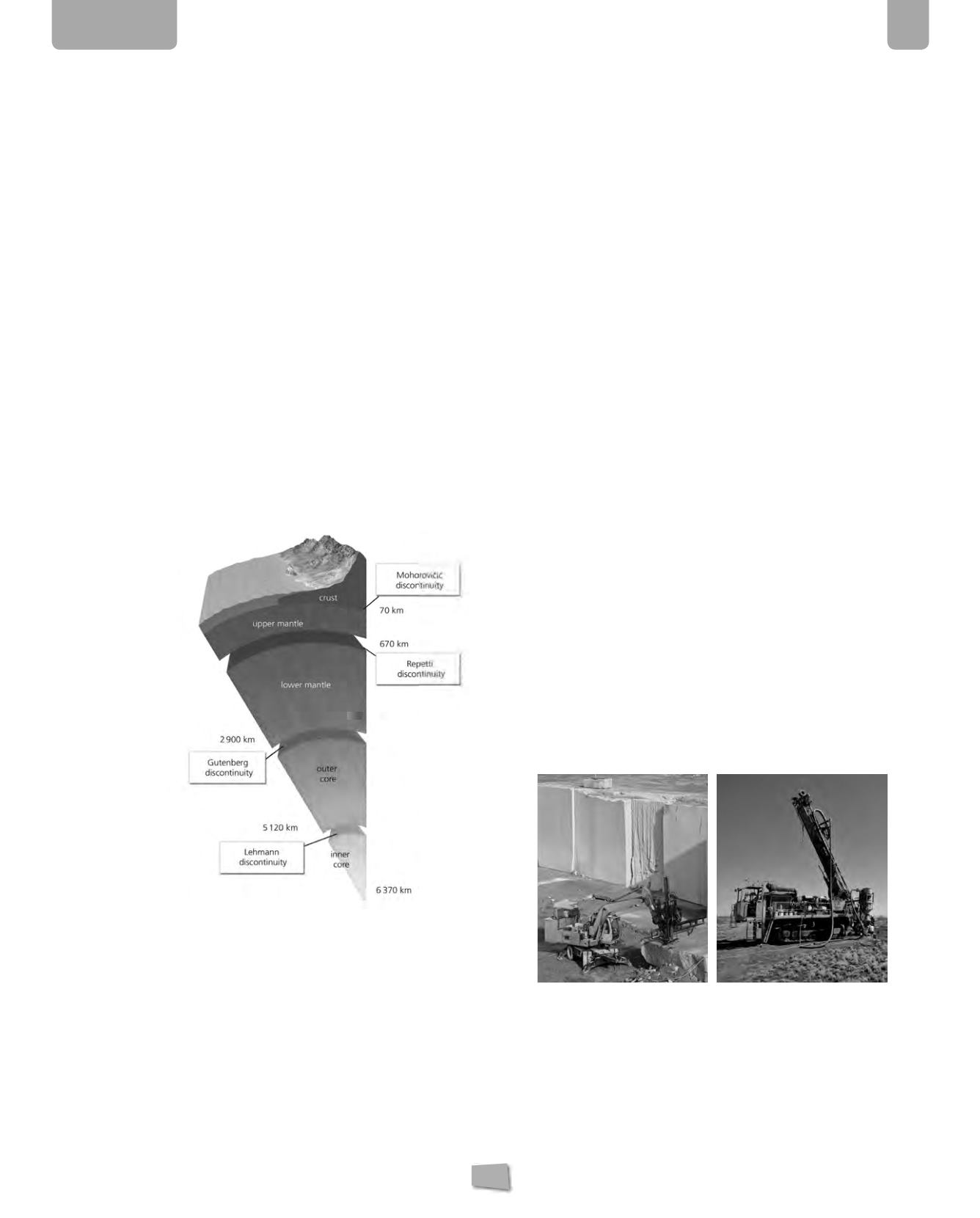
129
3
The Geosphere
EXAM A
1.
Write the difference between the following concepts:
a) Ore and gangue:
Ore refers to the minerals which are profitable to extract
from a deposit while gangue refers to the ones that are not
profitable to extract.
b) Colour of a mineral and streak of a mineral:
The colour is the appearance of the mineral while the streak is
the color of the powder produced when a mineral is scratched.
c) Tenacity and cleavage:
Tenacity describes how easily a mineral breaks and cleavage
describes the way a mineral breaks.
2.
Make a complete classification of rocks according to
their origin.
3.
Why do the seismic methods help us to study the Earth’s
interior?
Because the speed of the seismic waves vary as they pass
from one layer to another. The study of the data obtained
helped scientists to deduce the composition of the Earth’s
interior and thanks to it we know that the Earth is divided
into three layers: the crust, mantle and core.
4.
The following diagram shows the layers of the
geosphere. Write the name of each one of them and
their discontinuities.
5.
Explain what happens in the process of diagenesis or
lithification.
It is the process inwhich sediments transform into sedimentary
rocks.
Sediments deposited in sedimentary basins firstly suffer a
process of compaction, when they lose volume due to the
weight of them on top so they become compacted. After
that, cementation takes place after the water is lost and the
salts form crystals. The crystals act like cement and stick the
sediments together to form sedimentary rocks.
6.
Correct the following statements.
a) The conglomerate in a non-detrital sedimentary rock
with a superior grain size up to 2 mm.
The conglomerate is a detrital sedimentary rock.
b) Sandstone is a detrital sedimentary rock that produces
effervescence in contact with acids.
Sandstone does not produce effervescence.
c) All of sedimentary rocks are formed by minerals.
Coal and petroleum are formed by organic remains that have
not decomposed.
d) Clay is made up of grains of a size inferior to 2 mm
but easily visible.
The grains of clay only can be observed with a magnifying
glass or a microscope.
7.
Indicate the name of the processes mentioned:
a) Transforms a magma into igneous rock.
Cooling and solidification.
b) Transforms a sedimentary rock into metamorphic.
Metamorphism.
c) Transforms and igneous rock into sediments.
Weathering, transportation and sedimentation.
d) Transforms a metamorphic rock into magma.
Fusion.
8.
What rocks are used as combustible fossils?
Coal and petroleum.
9.
Give an example for each case:
a) Soft:
calcite, fluorite or apatite
b) Very soft:
talc or gypsum
c) Hard:
orthoclase or quartz
d) Very hard:
topaz, corundum or diamond
10.
Look at the images below and explain the types of the
superficial extractions.
The image on the left is a quarry. In quarries, large rocks are
extracted and cut into blocks or slabs.
The image on the right is an opencast mine. The minerals
are not deep underground so to extract them, they make
funnel-shaped holes (pits). The edge are stepped to
transport the minerals to the surface.


